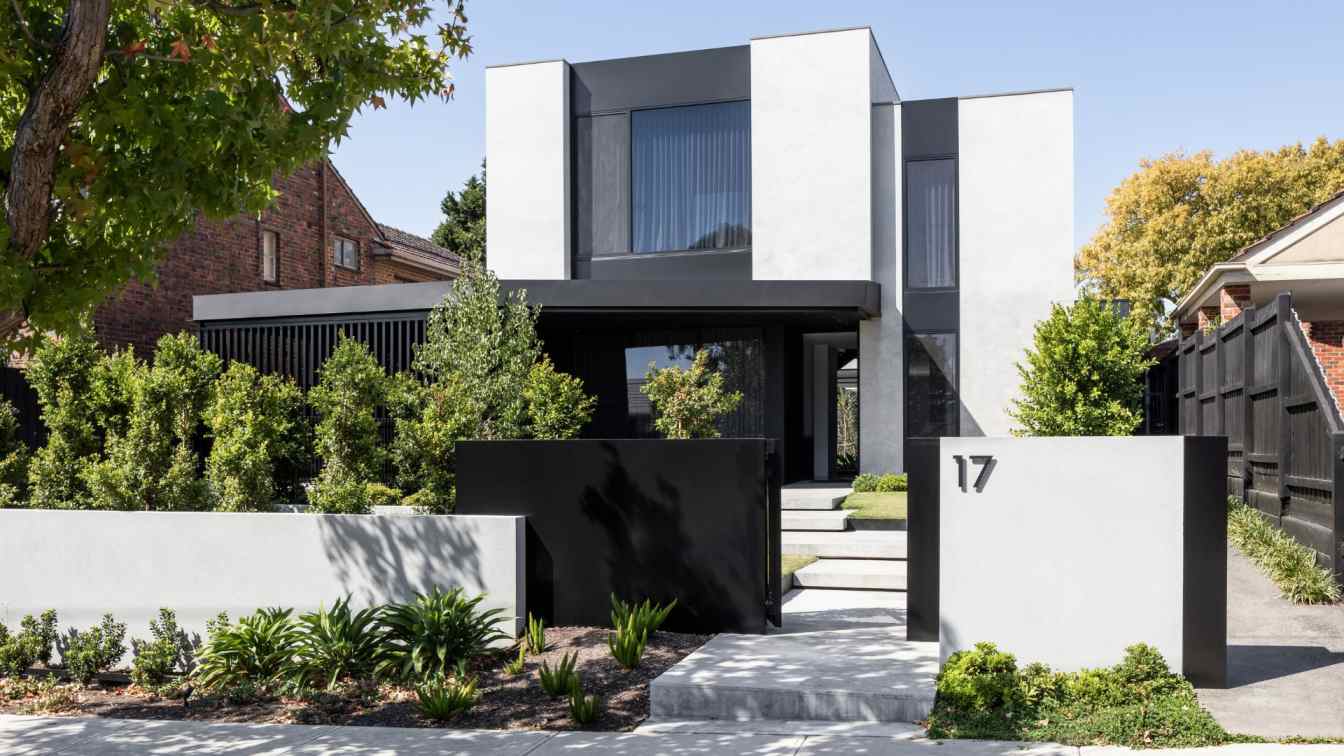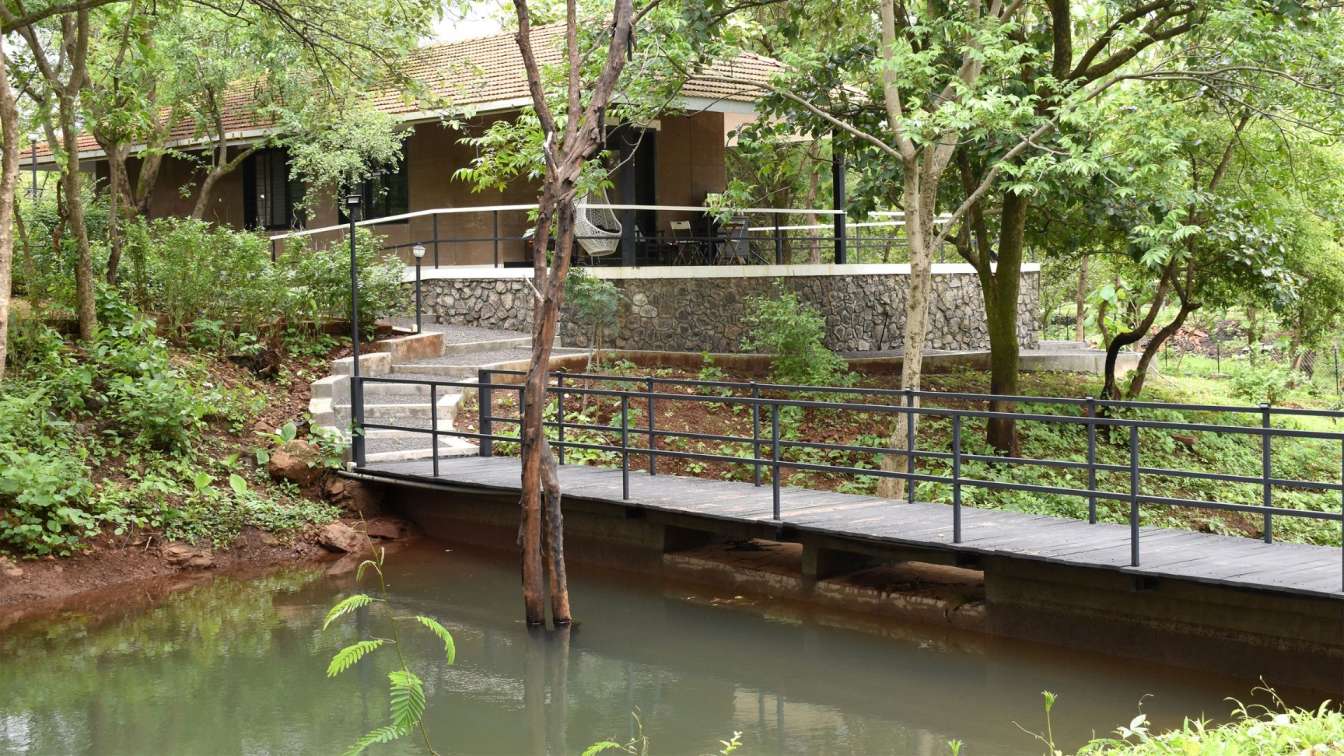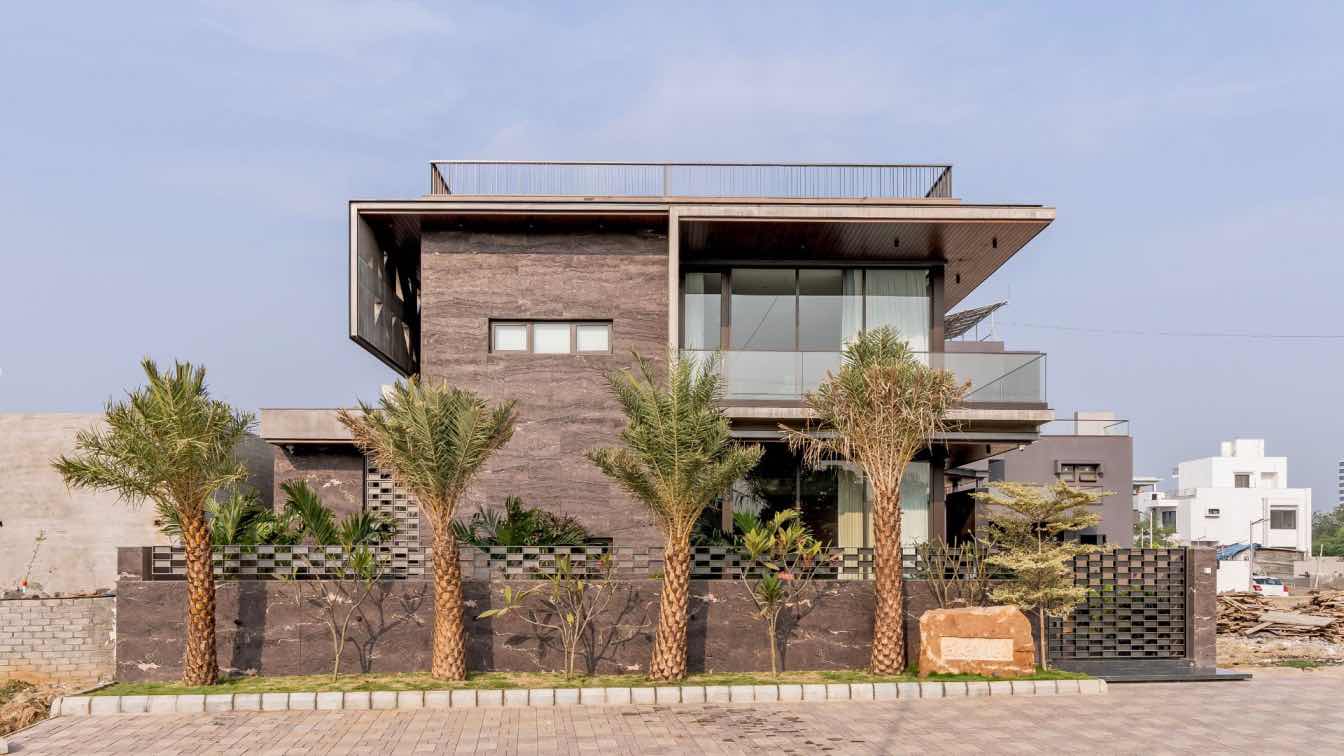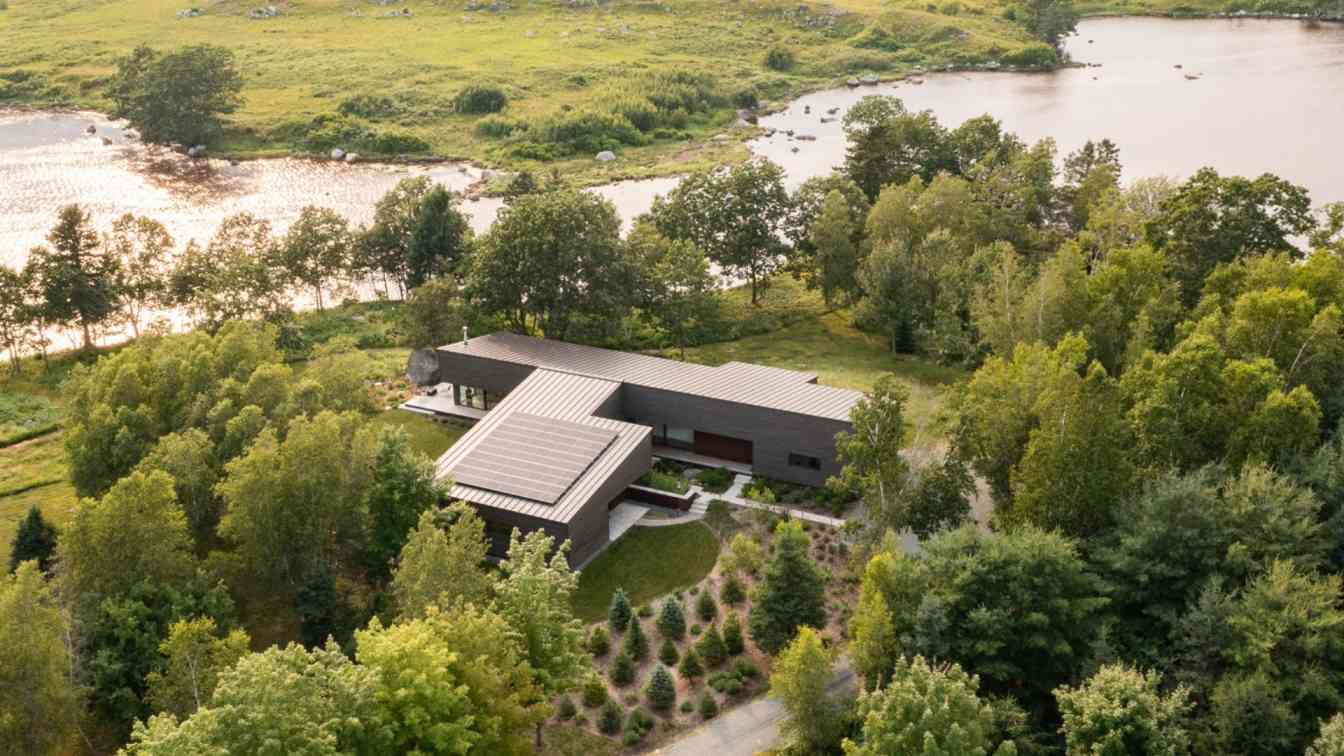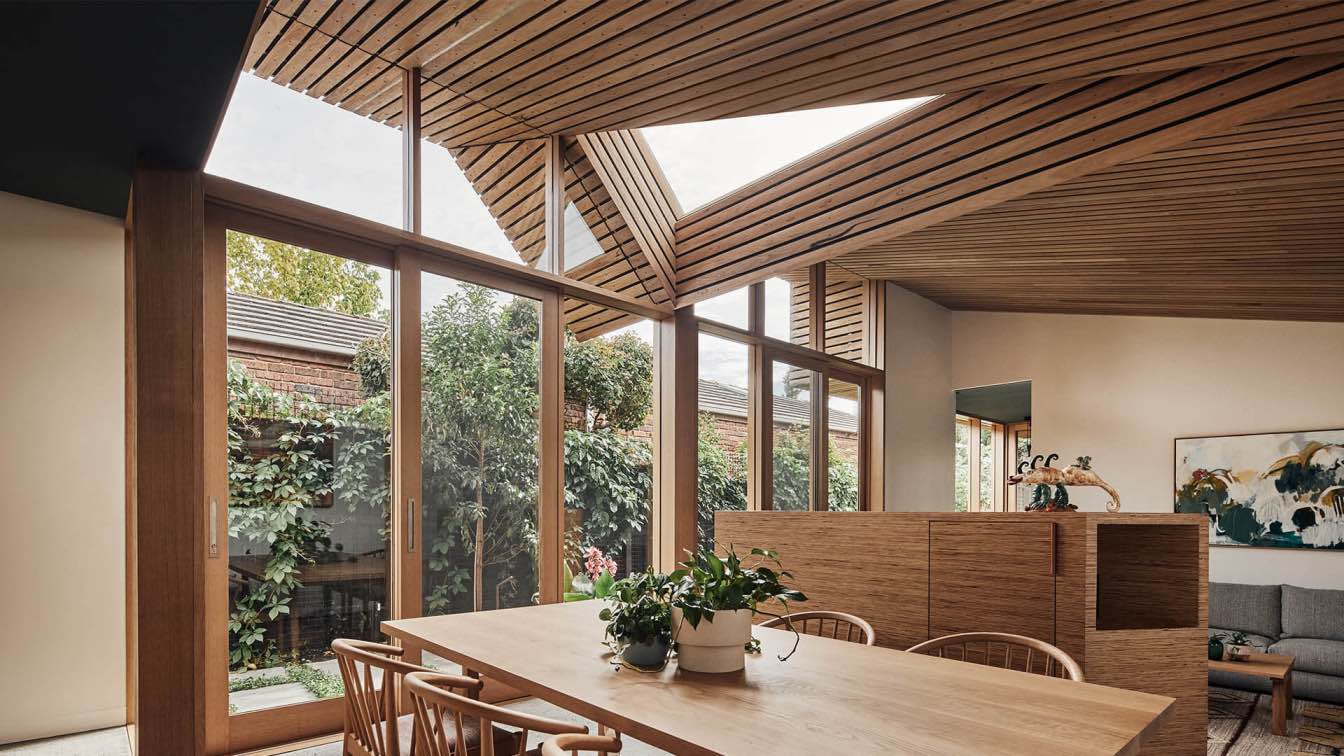C.Kairouz Architects: Balwyn House is a modern family home featuring a minimalist design and a monochromatic colour scheme. The exterior showcases a dynamic facade of stepped volumes, that naturally flow with the elevated site. Inside, the open floor plan is adorned with high-quality, durable materials, creating a sophisticated look. Large windows and high ceilings fill the space with natural light, connecting the indoor ambiance with the outdoor scenery. The subtle interior palette highlights the surrounding landscape, making nature the focal point. Drawing inspiration from modern Japanese design and wabi-sabi principles, Balwyn House embraces simplicity and a love for nature, offering a peaceful and harmonious living space.
What was the project brief?
Balwyn House is a remarkable family home designed for busy professionals and their children. Conceived as both a sanctuary and a statement, this residence offers an open, bright, and welcoming atmosphere with a striking presence that captures views and light. The minimalist design creates a refined aesthetic, effortlessly integrating natural surroundings into the living spaces.
Inspired by Japanese design principles, Balwyn House focuses on simplicity and clutter-free living. The thoughtful layout and ample storage solutions ensure a clean and organized environment, enhancing the overall well-being of the occupants. This harmonious blend of functionality and style provides a tranquil yet sophisticated living space where the family can thrive, balancing the demands of professional life with the serenity of a beautifully designed home.

What were the challenges?
Faced with the challenge of optimizing its west-facing orientation for year-round comfort, cross ventilation, and passive design, Balwyn House required strategic material choices, practical layouts and innovative solutions.
The design team used tinted glazing on west-facing windows, black battened screens, light-coloured render, and verandas to minimize heat gain. Inside, polished concrete floors, ceiling fans, sheer curtains, and thermal coverings enhanced climate control. High ceilings, large sliding doors, and a central courtyard improved natural airflow throughout the dwelling. Skylights and a window splashback increase natural light in southern aspects. The inclusion of hydronic underfloor heating also assists the home in providing year-round comfort.
The home's success lies in its flexible, functional open floor plan. Consistent materials integrate exterior and interior aesthetics. Practical features like a walk-in pantry and hidden laundry door maintain visual appeal whilst concealing often messier workrooms of the home. Breakout zones and private areas can be closed off for thermal management, adapting to the family's evolving requirements. Entertaining areas were placed on the eastern rear to maximize morning and midday light, these zones open to one another to create perfect places for gathering.
Understanding the family's needs was key to selecting these solutions. Balancing aesthetic appeal with functionality ensures the home looks attractive and performs efficiently in various weather conditions while maintaining sustainability. Effective communication among architects, builders, and stakeholders ensured cohesive design goals and practical implementation, enhancing liveability and comfort.
This approach exemplifies a balanced strategy in meeting aesthetic, comfort, and functional requirements in residential design.

What were the solutions?
Combining architectural sophistication with functional excellence, Balwyn House stands out in the market with features like the internal courtyard and light well, expansive storage solutions, and alfresco living spaces. The design includes unique elements such as offset stone steps at the front entrance and geometric motifs in the stepped facade and rear architectural fins. This meticulous approach enhances aesthetic appeal while optimizing functionality, promoting natural light and airflow for a dynamic and visually striking form.
Inspired by Japanese design principles, the project reimagines modern family living. With smart layouts, clutter-free spaces featuring ample storage, clean and concealed joinery details, and a muted colour palette, it promotes tranquillity and usability. The external staggering of forms is mirrored inside, like the layered stone island bench. Blackened timber battens add character, creating feature walls that conceal doorways for surprising reveals and defining different zones. A stunning ensuite with a freestanding tub, highlighted by a skylit void and adorned with a marble feature wall, exemplifies the design's aim to create a Zen-like retreat for the parents. The master suite, study, and entertaining areas are on the lower level, while the children's bedrooms and retreat are upstairs, providing versatile spaces for gatherings and privacy, catering to modern family dynamics.
Sustainability and longevity were key priorities. A knock-down-rebuild strategy replaced an underperforming structure with an energy-efficient residence. Features like rainwater harvesting, double glazing, extensive landscaping, and passive design principles highlight our commitment to environmental responsibility, enhancing efficiency and reducing the home's carbon footprint.
Designed for enduring appeal, Balwyn House avoids fleeting trends in favour of timeless design principles, making it a legacy property. The double-story layout, expansive openings, and integrated outdoor kitchen and entertaining spaces, including a pool, maximize the natural elevation, neighbourhood views, and indoor-outdoor connectivity. A concealed four-car garage basement provides off-street parking, ample storage, and additional amenities.
In essence, Balwyn House is a lasting investment in lifestyle and architectural excellence, poised to remain relevant and cherished across generations.

How is the project unique?
The project creates a modern family home that enhances well-being and health whilst implementing innovative design solutions that optimize a challenging west-facing orientation. It features a central courtyard that captures natural breezes and maximizes light in the middle of the home, enhancing ventilation and illumination. Additional elements like strategically placed operable tinted & clear double glazing, water tanks, charred timber screens, and ceiling fans improve efficiency, while the blend of Japanese-inspired aesthetics, hard-wearing finishes, and practical functionality ensures beauty and adaptability. Effective collaboration among the design team and builders ensured the project achieved a harmonious balance of aesthetics, comfort, and sustainability.
What are the sustainability features?
Balwyn House embodies a comprehensive approach to sustainability, incorporating several key strategies:
- Energy Efficiency: Double-glazed high-performance windows and doors, sealing, and thermally efficient insulation with a high energy rating were key to ensuring the building's envelope was airtight.
- Rainwater harvesting: The basement incorporates a 5000L rainwater tank to reuse grey water in the home’s toilet flushing and garden upkeep.
- Durable Materials: Use of high-quality, easy-maintenance materials such as natural stone, metal, concrete, and brick for long-lasting construction.
- Passive Design: The design promotes passive heating and cooling, reducing the need for relying on mechanical systems, and maximizing cross ventilation and ceiling fans for natural airflow.
- Tinted Windows & Shading Devices: West-facing windows are shaded by black battened screens, verandahs and awnings along with operable tinted grey double glazing to minimize heat gain whilst still allowing the spaces inside to be light, further enhancing the homes energy efficiency.
- Optimal Orientation: The north and east-facing orientation has been maximized to take advantage of natural light, breezes, and warmth, improving energy efficiency and comfort.
- Landscaping: Significant landscaping collaboration with Sabo Design ensured that the architecture and gardens worked hand in hand. Key elements were the specification of water-efficient, drought-hardy plants, along with mature planting that would offer shading helping to reduce the heat island effect and be complementary to the built form, softening hard edges. Overall, this partnership promotes indoor outdoor living and enhanced well-being with views of greenery at almost every turn.
These measures collectively ensure an eco-friendly, durable, and comfortable living environment.
Who is the client?
A young, energetic family that was seeking a home designed for entertaining in all seasons. They desired a place for relaxation and tranquillity, with a strong preference for a monochromatic, clean environment that seamlessly extends into the exterior landscape.



















